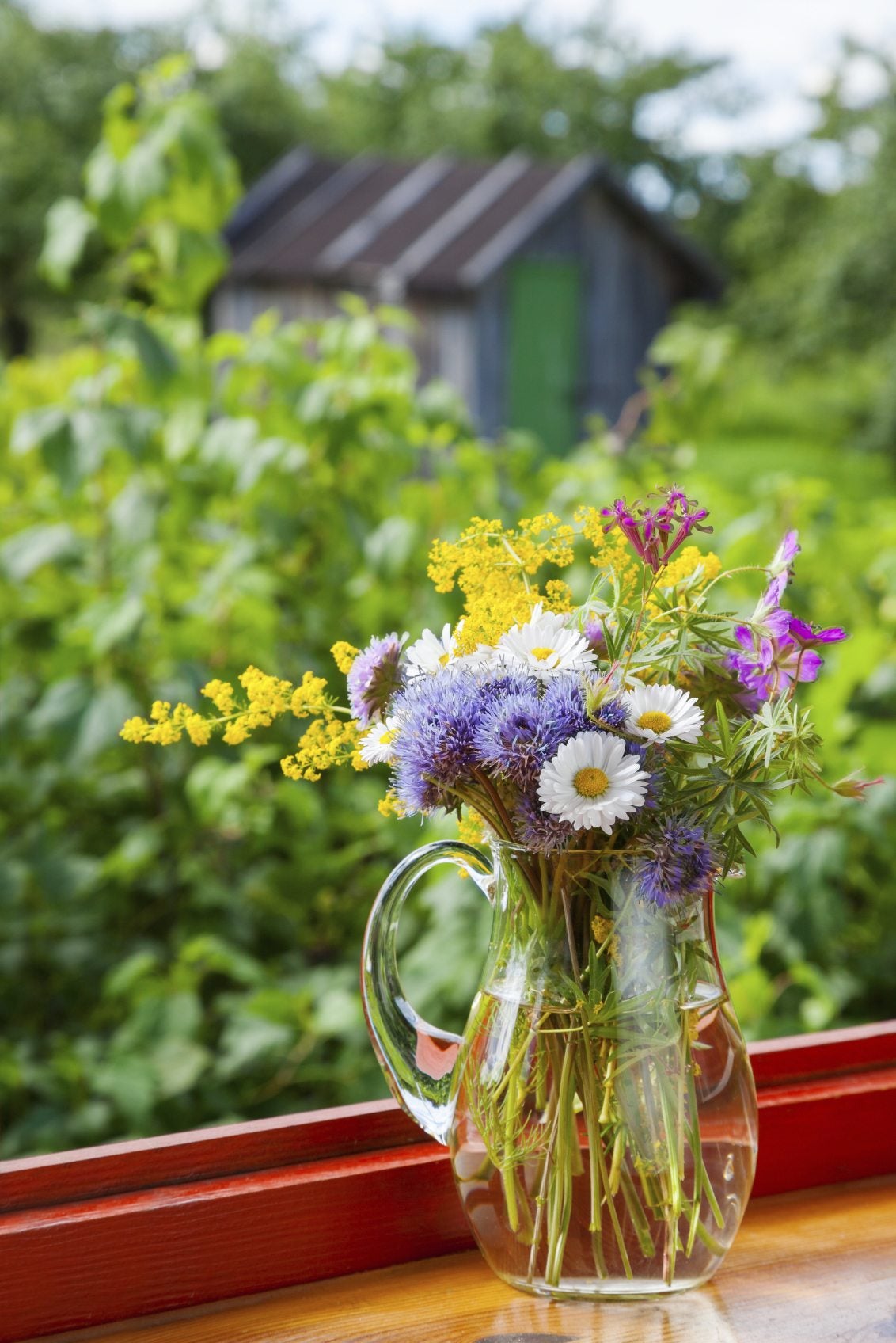Flower Food Recipes: What’s The Best Flower Food For Cut Flowers


Few things are as delightful as receiving a bouquet of cut flowers. These lovely displays last for days or longer, bringing color and perfume to the home interior as well as providing a remembrance of special occasions. Often, the bouquets come with flower food for cut flowers, but in the event that you run out, you can make your own formula to extend the life of the blooms. Flower food recipes start with common household items and preserve the flowers sometimes for weeks.
Feeding Fresh Cut Flowers
One of the more common ways to extend the life of cut flowers is with aspirin. While these tablets may keep the doctor away, there is little evidence they will keep your flowers fresh for any length of time, so this method is likely no more than a myth. Flowers that have been cut still need water and some form of carbohydrate to fuel continued beauty. The flower food for cut flowers that comes with the bouquet will be comprised of sugars and nutrients that are designed to keep blooms healthy and fresh. You can also make up a mixture yourself that can enhance cut flower life. Preservatives for cut flowers will come with the bouquet, but what about us do-it-yourself florists? The first steps to continued health in cut blooms are to start with a sterilized container and cut the ends of the plants properly. Clean cuts promote the uptake of water and nutrients essential to preserve the life of the flowers. Cut the ends underwater at an angle with garden shears or scissors and remove basal leaves. Sterilized containers ensure that old mold, disease, and other contagions don’t become part of the bouquet’s meals. These first steps aren’t a substitute for feeding fresh cut flowers, but they go a long way to helping continue the health of the plants. It is also important to use newly harvested blooms which will retain their beauty longer. Changing the water often to a slightly warm solution also enhances bloom retention.
Best Flower Food for Cut Flowers
The best flower food for cut flowers will depend upon the variety, age, and site conditions. Bouquets thrive in cooler temperatures, which is why florists place them in coolers prior to sale. Hot temperatures make it hard to keep moisture flowing into the stem and can cause wilting which stresses the cut blooms. Many enthusiasts crow about the benefits of using vitamins, pennies, soda, lemon juice, and even bleach. One of the more common flower food recipes includes:
- 2 tablespoons (29.5 mL.) lemon juice
- 1 tablespoon (15 mL.) sugar
- ¼ teaspoon (1 mL.) of bleach
These ingredients are then added to 1 quart (1 L.) warm water. A similar mixture with apple cider vinegar also seems to enhance cut flowers. If you want to waste some good vodka, it seems to feature in formulas touted as preservatives for cut flowers. Feeding fresh cut flowers with just a few drops mixed with a tablespoon (15 mL.) of sugar adds antibacterial action to prevent disease while the sugar provides the carbohydrates. The most important step recommended by florists is to keep the water clean. Warm water that is around 100 degrees Fahrenheit (37 C.) helps stems adjust and increases the flow of water and nutrients. Change water daily and add new food. Cut stems each time to open up the capillaries in the stem and enhance uptake. Cut these at an angle in water to reduce air getting into the stems. Keep the flowers cool, if possible, and in indirect light. If you use florists' foam for the arrangement, allow it to soak in the solution before inserting the stems. This keeps air bubbles from forming, which will escalate flower death. Use care when handling the stems to reduce crushing and other damage that will impede water and nutrient uptake. Above all, enjoy your lovely bouquet as long as possible and place it where you can see it every day. Flowers are the promise of life renewed and a connection to the natural world which is wondrous, beautiful, and delicate.
Sign up for the Gardening Know How newsletter today and receive a free copy of our e-book "How to Grow Delicious Tomatoes".

Bonnie Grant is a professional landscaper with a Certification in Urban Gardening. She has been gardening and writing for 15 years. A former professional chef, she has a passion for edible landscaping.